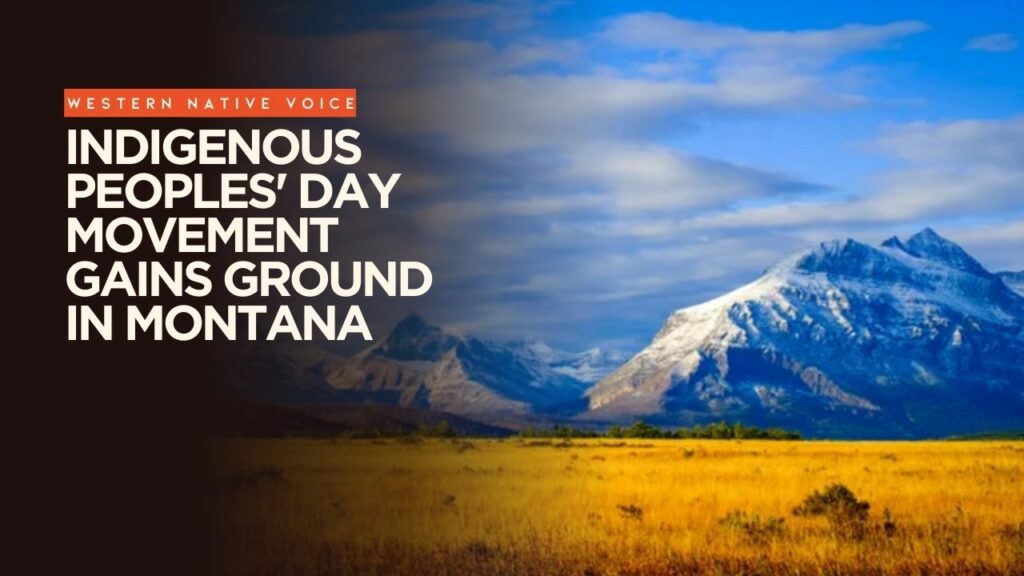
MONTANA— A growing coalition of Native-led organizations and advocates is working to establish Indigenous Peoples’ Day as an officially recognized holiday across Montana. Western Native Voice, in collaboration with tribal governments, advocacy groups, and community leaders, is part of this effort to honor and celebrate the history, culture, and contributions of all Indigenous peoples in the state.
Montana is home to 12 distinct Native tribes, including the Gros Ventre, Assiniboine, Blackfeet, Crow, Northern Cheyenne, Cree, Kootenai, Pend d’Oreille, Salish, Lakota & Dakota Sioux, and Little Shell. These tribes have deep-rooted connections to the land, and their contributions continue to shape Montana’s cultural and historical landscape. The recognition of Indigenous Peoples’ Day seeks to honor these legacies and the ongoing impact of these communities.
As of 2023, 20 states and over 130 cities have officially recognized Indigenous Peoples’ Day, sometimes alongside other holidays. This growing recognition reflects the increasing national awareness and respect for the cultural and historical contributions of Indigenous peoples (Wikipedia, Pew Research Center).
The movement for Indigenous Peoples’ Day reflects a collective desire to create space for education and reflection on the rich heritage of all Indigenous peoples in Montana and beyond. Various groups are coming together with a shared goal of ensuring that Native communities’ stories and achievements are recognized and appreciated.
Across the state, community forums, educational events, and cultural celebrations have helped raise awareness of the importance of Indigenous Peoples’ Day. These gatherings have fostered collaboration among tribal leaders, grassroots organizers, and allies who are committed to promoting greater understanding and respect for Indigenous communities.
Several Montana cities and counties have already adopted Indigenous Peoples’ Day as an official holiday, signaling growing support for the initiative. Advocates continue working with lawmakers and public officials to encourage broader recognition at the state level.
Education is a key focus of the movement. Supporters emphasize that Indigenous Peoples’ Day presents an opportunity for all Montanans to learn about the ongoing contributions of Native peoples. By focusing on education, the movement seeks to build unity and promote deeper understanding between Native and non-Native communities.
As the movement for Indigenous Peoples’ Day continues to grow, advocates remain optimistic that more communities will adopt the holiday and embrace its message of recognition and celebration. Ongoing efforts include engaging local schools, civic groups, and organizations in discussions about Indigenous history, while organizing events that showcase the cultural diversity and resilience of Native communities.
The recognition of Indigenous Peoples’ Day is viewed as an important step toward fostering respect and acknowledgment of Montana’s Native heritage. It serves as a reminder of the enduring contributions of all Indigenous peoples and their role in shaping the state’s past, present, and future.












